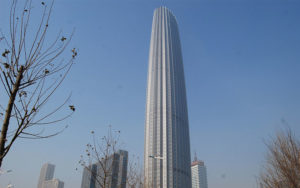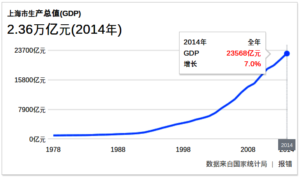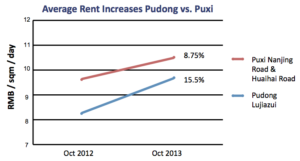The Five-Year Plans of the China government are broad guidelines for the development of the nation’s economy and society. The 14th Five-Year Plan was issued recently, and below we summarize the multiple ways that it affects commercial, industrial and retail properties.
Greener Office Buildings
The 14th Five-Year Plan (hereafter “the new Plan”) reaffirms China’s goal to reduce growth in carbon emissions so that they peak no later than 2030. (Shanghai is aiming for peak emissions by 2025.) Given that the building sector (both commercial and residential) is estimated to contribute 30% to 50% of China’s total emissions, these goals will translate to pressure on property developers and owners to greenify existing buildings and adopt emissions-lowering designs and materials for new buildings. Associated costs will be partially transferred over to occupiers, who will enjoy healthier workspaces.
Increasing Demand for Office Space
With the new Plan seeking to further open up and promote growth of the services sector, we expect new policies and legislation that will encourage sector investment and attract foreign players. Financial and technology services in particular are set to play a large role in the Plan’s goal of “Dual Circulation”, which is essentially the continued development of the domestic economy and its globalization. All this will boost demand for office space.
Logistics Real Estate to Grow
The new Plan will accelerate growth of the already-booming logistics industry. It calls for construction of logistics hubs and regional distribution centers, and seeks to promote growth of high-speed rail, international air cargo and international shipping. Expect to see continued construction of warehouse and shipping-related properties, including in areas away from the east coast and other highly developed regions where most are now concentrated.
Data centers to be major investment target
Data centers have already become a hot growth area in real estate, with increasing demand driven by the roll out of 5G, and the development of the Internet of Things and other databased technologies. The new Plan promotes continued digital transformation of government and society, mandating creation of a national big data center system, greater use of big data in industry and further development of data-based technologies. As the central component of the networks that these projects and technologies require, data centers are set to see even greater investment in the coming years.
Industrial parks will increase and upgrade
The new Plan calls for growth of advanced manufacturing and strategic emerging industries, in part by the building of advanced manufacturing clusters. Resulting policies should stimulate demand for advanced manufacturing plants, R&D facilities and laboratories, much of which will be located in business parks. The new Plan also emphasizes enrichment of the business park ecosystems as a long-term goal, with companies, universities, government entities and other parties engaging in mutually beneficial activity within parks.
Retail property market to expand on urbanization-driven consumption
The new Plan calls for accelerating growth in consumption in first- and second-tier cities by quickening the pace of urbanization – welcome news for retailers. The Plan also calls for upgrading cities with urban renewal projects, re-planning of commercial hubs and improvements to community commerce. Construction of new retail properties and investment in upgrades will be central to achieving these goals.
Chinese brands to become more visible
The Plan stresses the development of strong Chinese brands, and to the extent this goal is realized we expect to see further deployment of such brands in shopping malls.
New formats and brands to accelerate the transformation of retail properties
The epidemic has promoted the development of new consumption models, and having multiple sales and communication channels with customers is now the norm for retailers. The Plan views this trend as accelerating the already ongoing transformation of retail properties, and calls for quickening the integration of online and offline business, greater digitization of retail, and the use of digital technologies to do more than just attract consumer attention.






